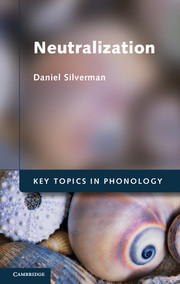15 - Cement
Published online by Cambridge University Press: 05 November 2012
Summary
“A sound complex cannot be considered a mechanical juxtaposition of a certain quantity of independent sounds. When combining with one another, sounds – we have in mind here not only their acoustic, but also their physiological aspect – accommodate themselves to one another. This accommodation is the cement which transforms several sounds into one integral complex” (Kruszewski 1883:25). This is the first mention of “cement” in Kruszewski's dissertation of 1883. It also serves as fine jumping-off point for our discussion of neutralization and phonological reason.
As I understand Kruszewski's writing – and I think I do, because his prose is exceedingly clear (at least as translated from the Russian by Gregory M. Aramian) – the basic idea of his “cement” is this: due to the constant repetition of speech motor routines – and the especially frequent repetition of word-internal speech motor routines – morphemes within words come to phonetically “accommodate” to one another such that there come to exist phonetic cues to word boundaries. In more modern parlance, word-internal assimilations tend to result in suspension of contrast within some lexical domain, the functional consequences of which may serve as an aid in parsing: the less-frequent phonetic patterns across word-boundaries are thus set in high phonetic relief against the suspended background. The result of these word-internal contrast suspensions – these increases in phonological rhyme – may thus be a concomitant increase in phonological reason: less common phonetic patterns may come to cue word boundaries.
- Type
- Chapter
- Information
- Neutralization , pp. 161 - 164Publisher: Cambridge University PressPrint publication year: 2012

